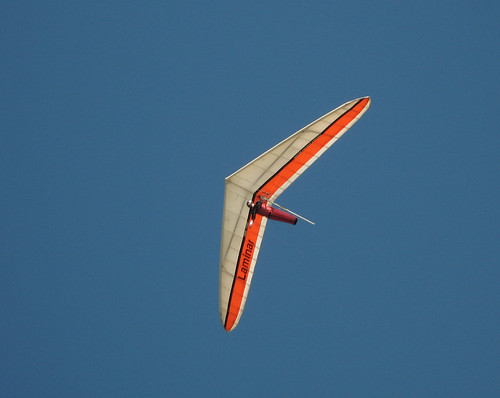In 1979, the Gossamer Albatross flew into history by crossing the English channel showing that humans really could fly an interesting distance. Since then, computers to model aerodynamics have become many orders of magnitude faster and our ability to fabricate lightweight sturdy structures, while not improved as much as computers, has also improved. Human powered aircraft have replicated the mythical flight of Icarus, a 74 mile distance.
Since many of the early Kremer Prizes have been awarded, there are some new awards that have yet to be claimed. There is presently a £100,000 prize for the first demonstrating of a “sporting” human powered aircraft, defined as an aircraft able to fly in the normal conditions encountered in the United Kingdom. Their stated long term goal in offering this prize is to make an Olympic sport out of human-powered flying.
I’m optimistic about this. I do think it’s a reasonable and rational goal to demonstrate a sufficiently durable aircraft for sporting. But I don’t think that people realize just how interesting human-powered air racing could be.
One hallmark of an interesting sport is that it needs to combine both athleticism and tactics. Baseball is not simply a game of how hard you can hit the ball, but a game of running and pitching and doing the best you can with the ball pitched to you, for example. Interesting sports also often take upon themselves some degree of equipment fetish. Thus, Skiing is somewhat about correct waxing and ski selection just as much as it’s about maneuvering and athletic ability.
As such, I tend to view human powered aircraft racing as something that takes many of the things that make cycling interesting.. the technological fetishism, the athletic prowess, and the strategic thinking.. and extend them even further into three dimensions for even more impressive and exciting athleticism.

Think of it like cycling with additions instead of a real aircraft with subtractions. It’s a recumbent where the pedals turn a propeller instead of wheels that has wings.
Clearly a certain degree of skill and minimum athletic will be required to simply fly. And a perfectly valid competition might be to set up a time trial over a course. But the real fun will come from mass-start racing. See, just like you can gain efficiency by streamlining off of another cyclist, you can do the same off of another aircraft. This is why birds fly in flocks. This will largely require the ability of the course marshals to disqualify unsafe flyers and also a certain sturdiness in design and a lack of external bracing wires.
You might think that there’s no way to make such a competition safe, but the powered air racing community has a decent safety record even though they share a similar danger from crashes. I suspect that, instead of pylon racing you’d want to use something akin to GPS tracking such that each aircraft would have a “warning zone” and a “danger zone” and the ability to instantly recall a flyer to ground for violating the danger zone or flying in a direction that would cause a dangerous collision risk.
Three dimensions makes things interesting. You can store up energy by climbing and then swoop down to trade altitude for speed, so you can “make” hills to do a screaming descent from. However, you can also coast in the ground effect where more of your energy can go to forward motion and corresponding less energy wasted keeping the aircraft in the air. This can interact with terrain features, such that you can coast uphill in the ground effect, preserve your added altitude on the descending side of the hill, and then dive later on. Thermals can lift you up, or you could end up fighting a headwind.
Combine team strategy and an added dimension and you could have a teammate take a “death pull” to help a teammate climb and then swoop to take the finish. Similarly, you might sit in somebody’s wingtip vortex forcing them to try and maneuver you off so you take advantage of their effort.
Different teammates might even have different aircraft with differing properties… perhaps a domestique with a wing more optimized towards giving a better pull. Captains might have more compact wings, such that they can draft for most of the race and then be able to safely attack towards the end in a giant dive.
Course design would end up looking vaguely like a road course. You need a solid landing surface underneath for safety. Differing terrain can make things more interesting with thermals and mountain waves that can zoom pilots up hundreds of feet to store energy such that beginning pilots would float in ground effect on flat terrain and experienced pilots could deal with challenging courses.
I tend to think that the biggest engineering difficulty is the bike business getting too involved. See, if a bike throws a chain, you’ve lost, but you aren’t dead. As long as a human-powered aircraft isn’t over water, they can throw a chain without much danger. The big thing is that you cannot allow the flyer to become detatched from the wing… or the wing to collapse. Given how willing racers have been to ride on somewhat questionable forks, even though fork failure is extremely dangerous, I’m somewhat worried that a racer might be willing to accept a lethal faceplant from 500 ft if they might win. I also suspect that real aerodynamics would be a much harder mistress than the faux aerodynamics and faux engineering that the bike biz is infected with.
But, overall, I think it would be an incredible way to fly for those who can manage it.